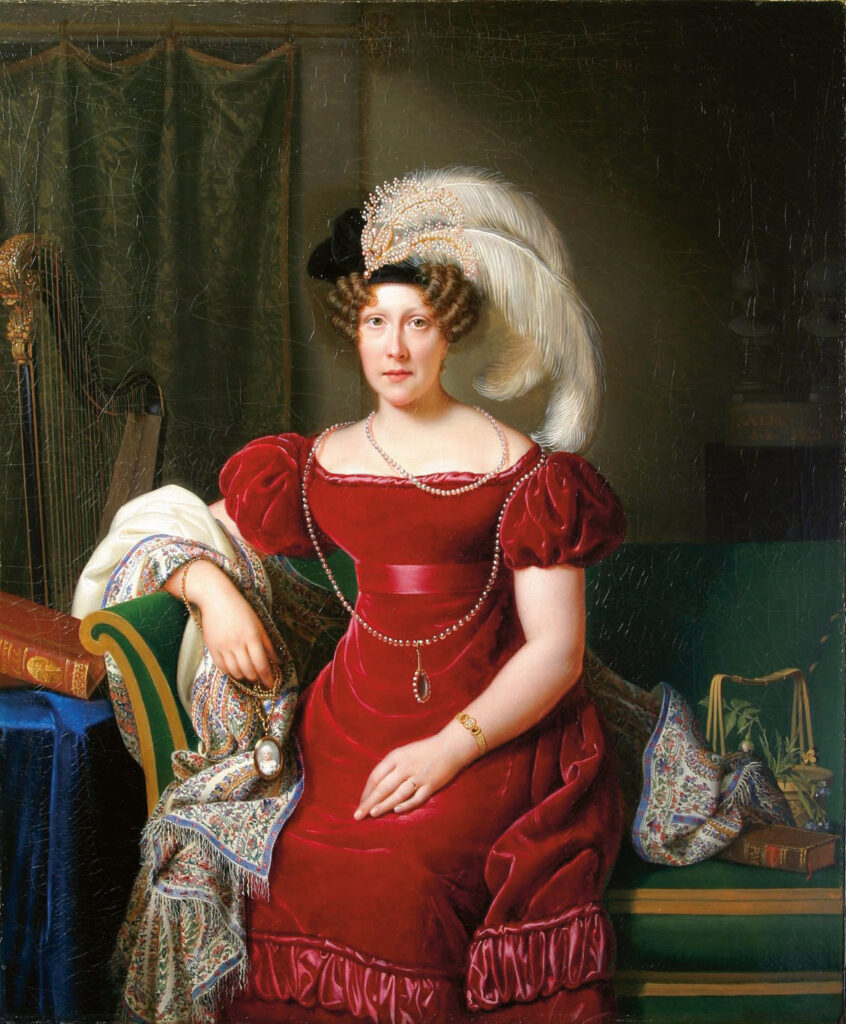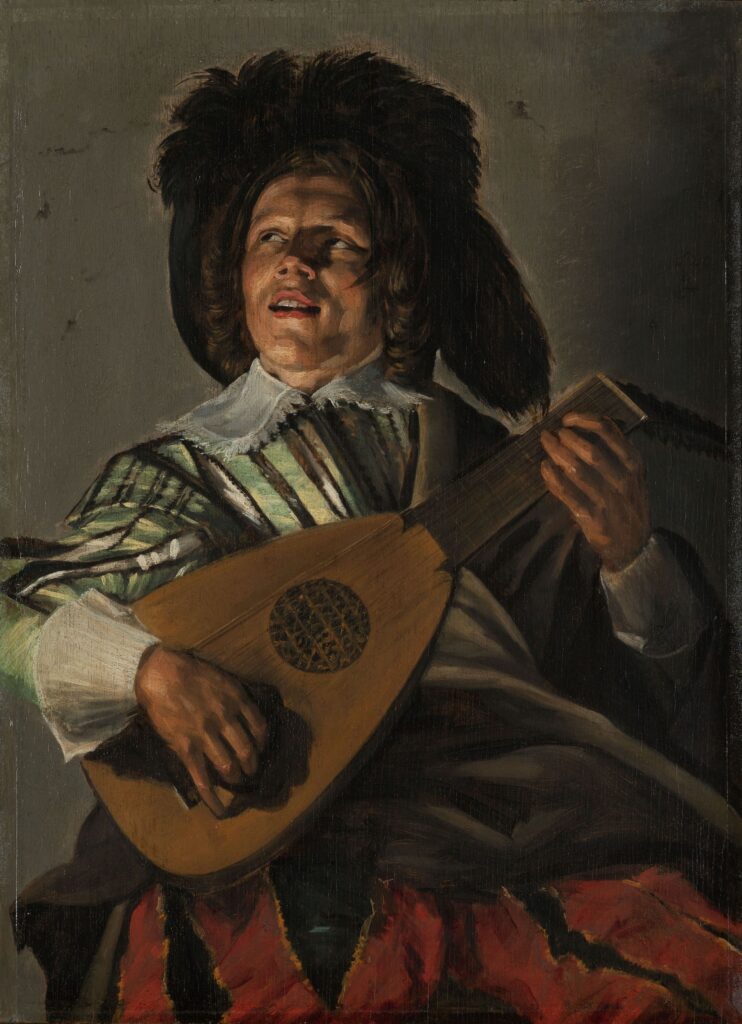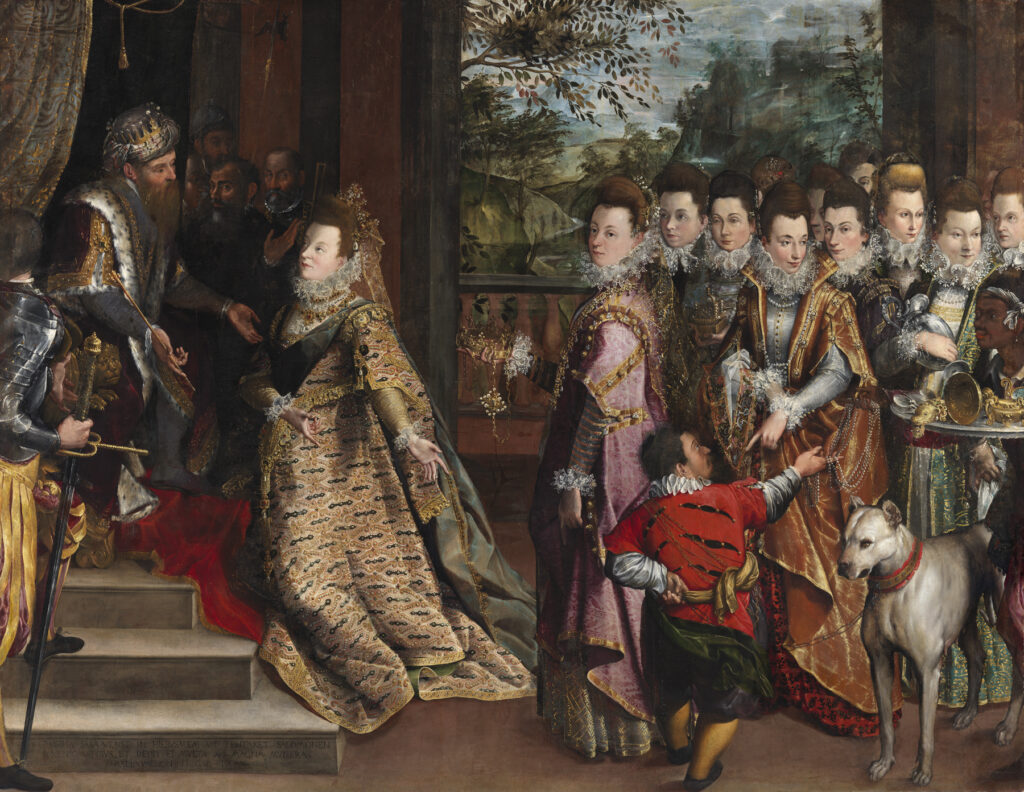A New Acquisition for the National Gallery of Ireland
Guest post by Lizzie Marx, Curator of Dutch and Flemish Art at the National Gallery of Ireland
An Animate Still Life
In 1742, when Dutch artist Rachel Ruysch was 78 or 79, she painted the delightful still life Vase of Flowers with an Ear of Corn (Figure 1). It is the latest acquisition to the Dutch collection at the National Gallery of Ireland, Dublin. Ruysch compiles a beautiful array of flowers for the bouquet that includes tulips with undulating leaves, hyacinths, roses and their delicately painted thorns, poppy anemones, forget-me-nots, and carnations.

Murky stems and a flicker of a reflection describe the glass vase that holds the bouquet on the marble plinth. A rare and interesting feature of the painting is the ear of corn, the dried husks of which are so evocatively painted that they could conceivably crunch to the touch. Such an addition in a composition by Ruysch, who specialised in still life painting, is, as far as we are aware, unique.
To call the painting a still life would not be entirely accurate, as Ruysch composes an arrangement full of dynamism. The most animated feature appears in the extreme foreground of the composition, where a rose stem is in the midst of slipping out of the bouquet and falling into our space. At the top of the composition is the rare double hyacinth known as gloria mundi, which was a highly desirable and costly flower at the time. It is arranged side-by-side with a tulip displayed with an opened petal. Just over a century earlier, the tulip—and especially those with streaked petals—was one of the most fashionable commodities of the Dutch Republic.
Ruysch’s bouquet shows just how coveted flowers could be, and it was likely no coincidence that on the same level as the tulip and hyacinth, she alludes to her own desirability as an artist, by prominently signing and dating her work “Rachel Ruysch / 1742.”
An Illustrious Career
From a very young age Rachel Ruysch must have learned all about the natural world, since her father, Frederik Ruysch, was an acclaimed botanist and anatomist. She also received training in illustrating naturalia from the skilled botanical artist Maria Sibylla Merian and the still life painter Willem van Aelst, who also trained her sister Anna Ruysch. What followed was an illustrious career, that brought Ruysch commissions from royalty and nobility including the Prince of Anhalt-Köthen, the Elector Palatine of Düsseldorf, and Florentine Grand Duke Cosimo III de’ Medici. So excellent were her artistic abilities that in 1701 she became the first female member of the Confrerie Pictura, the artists’ society in The Hague.
In addition to the substantial earnings that Ruysch gained from her artworks, she also won the lottery twice. In 1713 her winnings came to 200 guilders (around €2,400 today). Then in 1722, she bought with her husband and son a ticket that won them the grand prize of 60,000 guilders (around €710,000 today).

And yet, in spite of her fortune, she continued to paint later in her life. 1742 was a particularly productive year for her. Two other recorded works are also dated to that year. One, known today only through descriptions, is believed to be the pendant to the National Gallery of Ireland’s painting; it featured the unusual addition of a pineapple beside the bouquet, in place of the corn in the Gallery’s work. The second was recently acquired by the Museum of Fine Arts, Boston (Figure 2). She inscribes this work with her name, date, and age: 79. Like a badge of honor, the inclusion of her age declared that the painting was the result of her many years of experience.

Whether at 78 or 79 years old the steadiness of her hand had diminished, or her eyesight had weakened, no trace of such conditions can be perceived in the painting. On the contrary, her ability to paint in detail is astonishing. In the National Gallery of Ireland’s work, Ruysch meticulously depicts the thorns of the rose stem. She often took care to include minute insects crawling among the flowers in her paintings (Figure 3), but in this composition none are to be seen. She does however allude to a visit from an insect. A leaf on the rosebud’s stem has a hole, suggesting that one has taken a bite out of it (Figure 4). These marvellous details reflect the sharpness of Ruysch’s eyes, and of her imagination too.

A Distinguished Collector: Lucretia Johanna van Winter
In the early nineteenth century, long before the painting joined the National Gallery of Ireland, it had caught the eye of an ambitious collector of Dutch art. Lucretia Johanna van Winter (Figure 5) was the daughter of Pieter van Winter, a prolific Amsterdam indigo merchant. We read from Lucretia’s diaries that her social position furnished her with all the trappings of Amsterdam high society. Between dinners and theatre outings, she took pleasure in sleep, and satisfied her sweet tooth with drinking chocolate and currant biscuits.

She also had an exquisite eye for art. This was in part thanks to the privileged access Lucretia had to her father’s collection of paintings. Some highlights included Johannes Vermeer’s The Little Street, as well as the grand full-length portrait pendants of Marten Soolmans and Oopjen Coppit, by Rembrandt van Rijn, which were jointly acquired by the Rijksmuseum, Amsterdam, and the Musée du Louvre, Paris, in 2015. The Serenade by the Dutch artist Judith Leyster also belonged to his collection (Figure 6).

Between 1809 and 1822 Lucretia built on her father’s art collection by acquiring a further 53 old master paintings, including Vermeer’s Milkmaid. She favoured flower still lifes, notably by Jan van Huysum, a contemporary of Ruysch. When she married Hendrik Six van Hillegom in 1822, her paintings were absorbed into the Six family’s collection. Lucretia’s passion for collecting seemed to have burgeoned during her marriage, as she acquired a further 171 paintings. While these acquisitions were made under the Six family name, the National Gallery of Ireland’s Ruysch was the last painting that Lucretia purchased before her marriage, and the last work that she acquired under her own name.
A First for the Gallery’s Dutch Collection
Vase of Flowers with an Ear of Corn joins a number of paintings from the National Gallery of Ireland’s early modern art collection by accomplished women artists. Among them are paintings by Sofonisba Anguissola, Elisabetta Sirani, and Angelica Kauffmann. Lavinia Fontana’s The Visit of the Queen of Sheba to King Solomon, from 1599 (Figure 7) counts as one of two paintings by the artist in the collection. It recently took centre stage at the Gallery’s magnificent summer 2023 exhibition, Lavinia Fontana: Trailblazer, Rule Breaker, curated by Dr. Aoife Brady. The Gallery’s other painting by Fontana is Portrait of a Gentleman in Armour.

Ruysch’s painting counts as the first work by a woman artist to join the Gallery’s Dutch collection. However, it was previously thought that the Gallery was in possession of a painting by another Dutch woman artist, Judith Leyster. She received her training from Frans Hals, one of the most important artists of the period. The Gallery’s painting depicts a woman sewing by candlelight with her two children warming themselves by a fire (Figure 8). Such a domestic scene would have once been considered to be a conceivably fitting subject matter for a woman to paint. However from as early as 1991, the attribution was questioned by experts, when they analysed the painting technique and compared it with other works by Leyster.

The work was instead connected to another painter in her milieu, the brother of the artist who trained her, Dirck Hals. With the reattribution, the Gallery was privileged to gain a painting by Dirck Hals, but in the process lost the only work by a female artist in the Dutch collection. The Ruysch acquisition now marks a definitive milestone with regards to the representation of women artists. It reflects the exceptional paintings produced by the most prolific women of the Dutch Republic.
Conclusion
This beautiful flower still life draws together Ruysch’s botanical knowledge, her love of flowers, and her continuing zeal for painting later in life. Contrasting with her earlier paintings that depict gloomy forest floors, here her vibrant palette is comparatively light. It is emblematic of the course in which the genre would proceed in the eighteenth century: a new era of bright, colourful, joyous still lifes.
Dr Lizzie Marx is the Curator of Dutch and Flemish Art at the National Gallery of Ireland. She received her doctorate at the University of Cambridge with the thesis Visualising, Perceiving, and Interpreting Smell in Seventeenth-Century Dutch Art. She was the 2018–2019 Andrew W. Mellon Fellow at the Rijksmuseum, Amsterdam. She has worked on various exhibition projects at the Mauritshuis, The Hague, the Fitzwilliam Museum, Cambridge, and the University Library, Cambridge.
Rachel Ruysch’s Vase of Flowers with an Ear of Corn is on view in Room 39 at the National Gallery of Ireland.
More posts about Rachel Ruysch:
Rachel Ruysch at Munich’s Alte Pinakothek, by Erika Gaffney
Floral Still Life, 1726—A Masterpiece by Rachel Ruysch, by Lawrence W. Nichols
Rachel Ruysch (1664-1750), by Erika Gaffney
Art Herstory’s Rachel Ruysch resource page
More posts about floral, still-life or botanical art by women:
Louise Moillon: A pioneering painter of still life, by Lesley Stevenson
Women and the Art of Flower Painting, by Ariane van Suchtelen
Books, Blooms, Backer: The Life and Work of Catharina Backer, by Nina Reid
Curiosity and the Caterpillar: Maria Sibylla Merian’s Artistic Entomology, by Kay Etheridge
Alida Withoos: Creator of beauty and of visual knowledge, by Catherine Powell
A Clara Peeters for the Mauritshuis, by Quentin Buvelot
Barbara Regina Dietzsch: Enlightened Flower Painter, by Andaleeb Badiee Banta
Madeleine Françoise Basseporte’s Hyacinths at the French Court, by Mary Creed
The Protofeminist Insects of Giovanna Garzoni and Maria Sibylla Merian, by Emma Steinkraus




